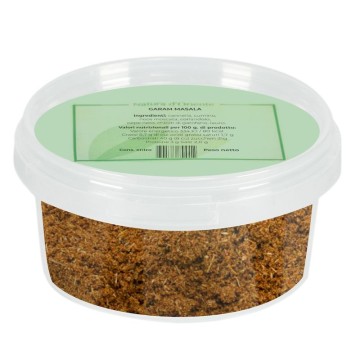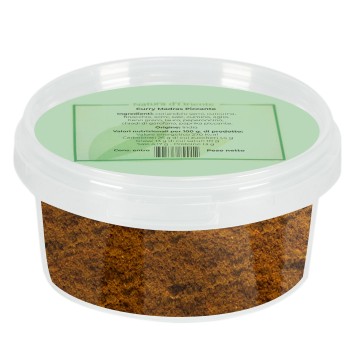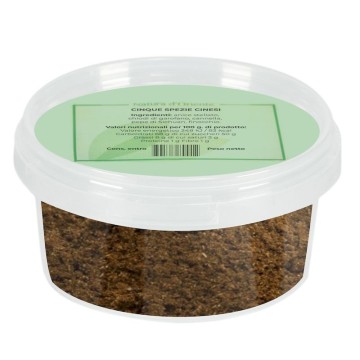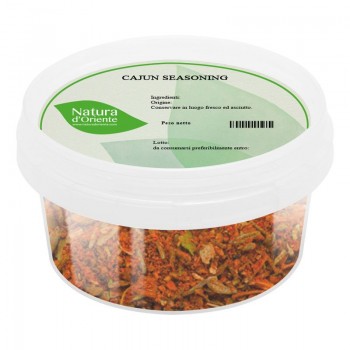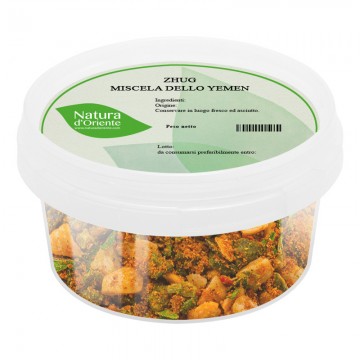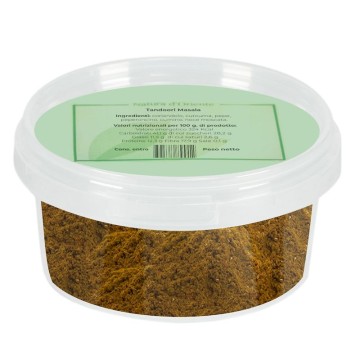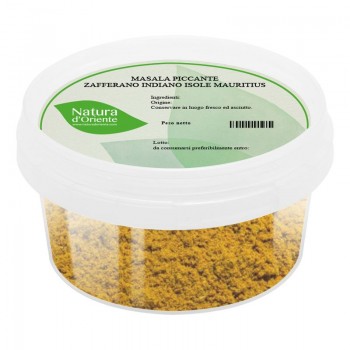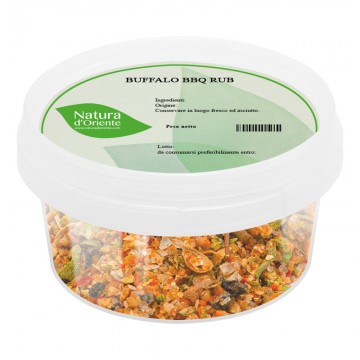Argentina's Mendoza Province inspires this barbecue spice blend with its grilled meat traditions. The parrilla, the Argentine word for the grill for preparing meat on the hearth (brasero), is part of the traditional asado barbecues . From this South American custom also derives that of flavoring meats with sauces and mixes of spices designed for the barbecue.
In asado, however, it is essential to maintain the natural flavor of the beef, so marinades or spice mixes are light and not as common as in Central and North America. There is also an Argentine touch, in which spices or sauces with spicy and herbaceous flavors are used, which combine parsley, coriander, oregano, with crushed garlic, chopped chilli, onion. Sometimes they add peppers, paprika or sweet pimenton powder .
These ingredients are ideal for a rub that in the barbecue can enhance well-cooked, tender and tasty meat, smoked at the right point. Different combinations of salt, spices, dried herbs, vegetables and other condiments are excellent BBQ rubs to flavor meat before (or after) the grill .
In the case of wet sauces, they will be mixed with oil and vinegar, otherwise these ingredients inspire dry-rub for the “asado” version of the BBQ. Grilled meat in the parrilla tradition is usually chosen from ribs, morcilla sausages (black pudding, rice, onions and spices), chorizo sausages, salchichas parrilleras (long, thin casings), sirloin, steaks and tenderloin .
The highlight is Argentine beef, with cuts such as ribs or ribs, simmered until the meat is well cooked. The Argentine meat is tasted in the cuts that give an intense taste, through long cooking and low temperatures; lightly flavored with the BBQ sauces and spices first.
How to use the Mendoza BBQ blend in the kitchen
Sprinkle the meat of the BBQ spice mixture over the meat before grilling or roasting, letting the seasoning penetrate the fibers with the help of your fingers and palm. Rub and then let the seasoned meat rest for about 2 hours in the refrigerator before cooking. Barbecue the meat until the rub forms a succulent crust. This spice blend can also be used with vegetables, potatoes, or to flavor hamburgers and meatballs.
Origins and History of BBQ blends - rub
In the Latin American tradition, the barbecue was born as in North America during the nineteenth century. An important difference is due to the meat that derives from the famous Argentine pastures: ideal places for breeding, which already prompted the Spaniards to introduce the livestock known in Europe in the sixteenth century. The first breed was the Spanish Turdetano, followed by the British Angus and the Shorthorn, imported to improve the quality of the meat. The vast plains and the climate of Argentina allowed the development of millions of cattle, already at the beginning of the eighteenth century.
The meat was cheap and abundant, and the breeders (gauchos), for cooking, gave life to the tradition of the Argentine asado, initially formed by a metal frame on hot coals. It comes from the Spanish word asar, which means to grill.
The gauchos roasted mainly beef, eating every cut of meat, even offal. Today, as mentioned, Argentine meat is cooked barbecue-style on a parrilla or grill. There are several differences between a parrilla and an American charcoal grill. The parrilla has a side firebox that allows the grill to add wood to refuel the embers (the wood or coal is burned to the end).
The parrilla preparation technique, therefore, allows greater control of the fire and temperature, even with a movable grill to bring the meat closer to or away from the heat. In any case, this type of cooking with asado is a classic of the local gastronomy that accompanies meats with sauces or mixtures of spices, even if not too tasty as in the custom of the North American barbecue.
Parrillero salt, a barbecue salt to be applied to meat, and a pinch of black pepper are often used for slow grilling. Most of the time, asado puts beef (vacuno) on the fire, as well as lamb, pork, or mutton. The portions are very generous, the meat very well cooked, and flavored with sauceslike chimichurri, made from chilli.
The dried chimichurri sauce , can be used with a sweet and a spicy version, and is usually composed of onion, peppers, salt, pepper, parsley , in some cases tomato. Combining red, green, yellow and orange peppers will make criolla sauce - a blend of chopped tomatoes, peppers, garlic, chilli, coriander with vinegar and oil. Both wet and dry, this mix of spices and ingredients is the most common, and can give its herbaceous and slightly spicy taste, especially to chorizo (pork) sausages, rib tira de asado, steak or rib of beef, and fillet steak. Traditionally, the mollejas, sweetbreads cooked until crispy over a hot fire, are cooked and sprinkled with spices and lemon.
Mendoza BBQ: side effects and contraindications
Blends with spices for the barbecue or grilling, must be taken respecting the recommended doses. In particular, for those suffering from gastrointestinal irritation and ulcers, or irritation of the urinary tract; in such cases, spicy mixtures can provoke disturbances and worsen the conditions of inflammation. The BBQ blends, particularly if spicy, if consumed in excess, can cause effects such as burning in the palate, heartburn, diarrhea, irritation of the mucous membranes. You also need to evaluate the individual ingredients of the BBQ spice blend, identifying if they are already known for possible allergic reactions. Due to the possible irritation, caution is advised when taking barbecue rubs to pregnant and breastfeeding women.







 No reward points for this product.
No reward points for this product.





